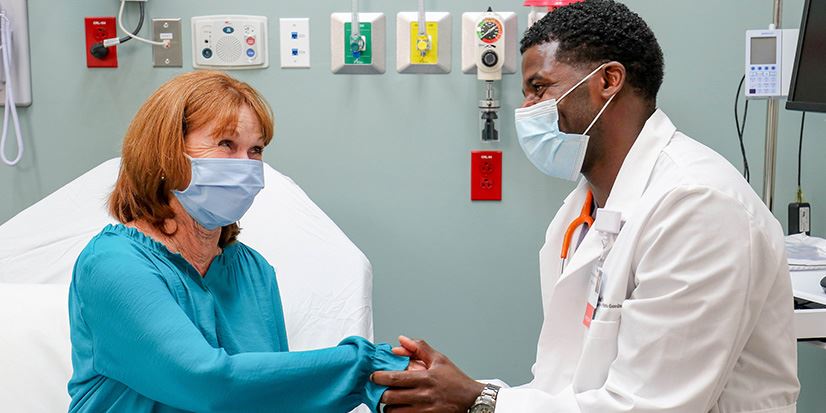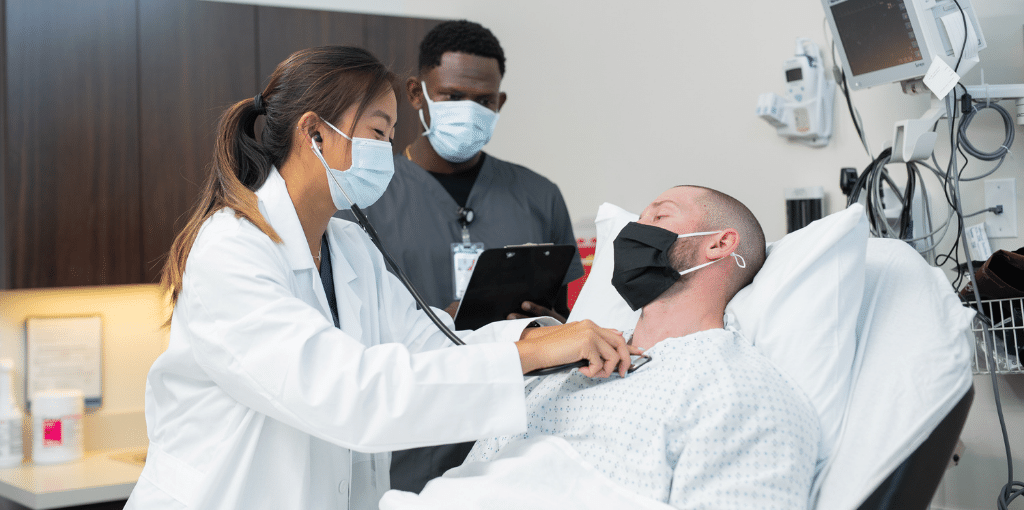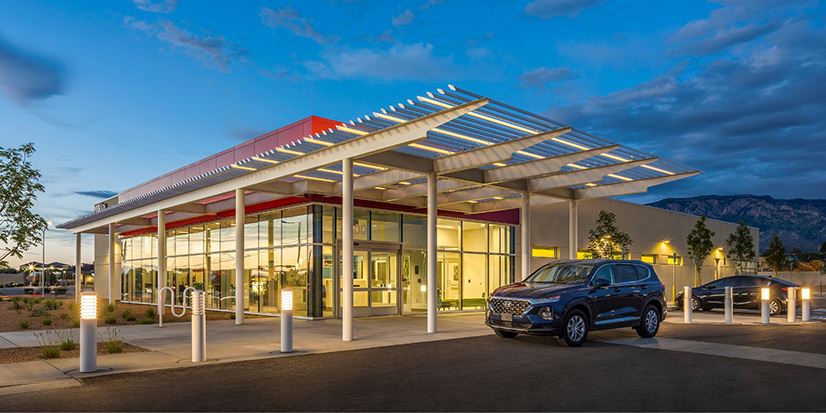Why Standalone ER or Urgent Cares Are Not as Efficient
- Category: Consumer Health
- Posted On:

Freestanding ER or urgent care facilities have popped up across the country to serve patients needing medical services, especially for those who live in rural areas that might not have access to the level of care that major cities do. Their ultimate purpose is to help patients receive immediate medical attention, but the downfalls lie within the services they can and cannot provide. For example, urgent care clinics cannot administer emergency services, and standalone ERs are overrun with patients deemed non-emergent. Patients are wasting their time, excessive spending is happening, and patients are leaving unsatisfied with their care.
This leaves a significant gap within the healthcare system. How does the nation reduce its ER utilization rates and provide adequate access to care?
Many times, when a patient visits a freestanding ER with a non-emergent condition, the patient is still billed at the ER rate. As a result, most patients leave feeling frustrated when they should only be worried about receiving the quality care they deserve.
The Solution to Standalone ER or Urgent Care Facilities
Health systems need a solution that bridges this medical care gap. Health technology and innovation are beginning to make way for a consumeristic healthcare model. They are shifting to accommodate patient needs and the desires of health systems looking to integrate modernization with efficiency, quality care, and avenues that position them as a leader for making positive and effective changes on behalf of patients.
One solution is to combine urgent care and the emergency room into one location—one that is scalable, profitable, and removes many of the burdens plaguing hospitals with emergency departments today.
Important Healthcare Questions Need to be Answered
But first, we must understand why the individual healthcare models—presumably a complete solution to healthcare woes—can be effective but are not an overall solution. Continued access to care for patients is always a great thing. Still, if health systems are looking for trust to be placed in them by patients, they must also ask themselves whether these models are entirely taking care of patients beyond delivering treatment. Are patients fairly paying the price of these services, or is the facility contributing to unnecessary medical spending? Is the model diversifying and adding value to the market or oversaturating areas that are overwhelmed with healthcare options?
Now more than ever, health systems should make intelligent decisions aligning with their values and mission. Health systems also need to understand the goals, wants, and needs of the communities they serve. New healthcare facilities are an investment, requiring health organizations to be proactive, innovative, and agile to navigate and address today’s current challenges. Solutions come with time and innovation, but there are ways to examine what is present and look for opportunities to improve or overhaul rising concerns, especially among many healthcare professionals.

Comparing Freestanding ER and Urgent Care Centers
While it might be counter-intuitive to compare emergency departments to urgent care clinics, noting the differences and the pros and cons of each can help health systems better understand the right business ventures they may want to explore—especially with the introduction of Intuitive Health’s dual ER and urgent care model.
While explored later in this text, the hybrid system offers an alternative, diverse method of approaching healthcare, offering a unique solution for both patients’ needs, addressing precisely what health providers may be looking to include in their communities, and optimizing new partnerships for success.
This is where the healthcare conversations need to continue and expand to create a new pathway forward. There is no one-size-fits-all solution, but the health industry has made progress, especially in recent years, with the consumeristic healthcare model focusing on convenient access to care and patient desires.
Still, here is the value and detriment of where the healthcare industry is at today with the current landscape of medical care options:
Freestanding ERs
Freestanding emergency rooms offer emergency medical services that do not require surgery or overnight stays. Freestanding ERs are located outside an ordinary health campus, as standalone ERs are not attached to a hospital. This lifesaving component is worthwhile to those who live farther away from inner-city health facilities and require critical care that cannot be administered at urgent care or a physician’s practice.
All freestanding ERs must be open 24 hours a day. Most use hospital ER technology and provide ER-certified doctors onsite. Typically, no appointment is needed, and walk-ins are welcome.
Generally, freestanding ERs can treat almost the same conditions as a traditional hospital emergency room environment. However, there are limitations as the type of patients the facility can see, usually treating those that will be able to leave the same day.
While patients receive emergency care in a freestanding ER, this model’s downside lies in its fees. Many patients confuse standalone ERs with urgent care and are sticker shocked when they receive the bill. Even further, many freestanding ERs don’t accept every available insurance and often use confusing messaging such as “all insurance accepted here” language.
Plus, the infrastructure and costs of maintaining a freestanding ER are typically not feasible for smaller regional hospitals, so fewer are found in less populated areas.
Freestanding ER facilities are not all bad, of course. The current crop of freestanding ERs use technology to make healthcare more straightforward, accessible, and convenient for patients. But they have limitations and are not meant to fully replace hospital-based emergency departments or be a complete solution to all of healthcare’s current challenges.

Urgent Care Centers
On the other side of the spectrum of emergency departments are urgent care facilities. As of 2019, it was reported by benchmarks from the Urgent Care Association that the total number of clinics had reached over 9,500 facilities, jumping up 9.6% from the previous year. The rapid growth shows that patients are looking for accessibility, affordability, and convenience.
Urgent care centers can be a vital part of the American healthcare system because of their ease of use. They provide essential medical care for patients with minor, non-life-threatening situations and illness and injury. While care is still critical, it’s not severe enough for an emergent environment, such as accidental cuts, allergies, colds and flu, sprains, abdominal pain, and more.
In addition, these facilities offer a convenient and affordable alternative to emergency rooms for patients and their families, translating to lower out-of-pocket expenses rather than a hefty emergency room bill.
Additionally, an urgent care center is a good alternative if a patient’s primary care provider is unavailable. Most provide extended hours and do not require an appointment. They’re conveniently located and often have much shorter wait times than the ER.
However, there are several downsides to urgent care centers. While a great resource and another medical care option, if patients seek urgent care support and find out, they need lifesaving care, they are then redirected to another facility that can handle the level of care they need. This wastes a patient’s time that they could have spent at the correct facility. Now, the patient is on the line for two different billings: one for urgent care and one for an emergency department. And similar to freestanding ERs, urgent care centers do not administer specialized care, which means they may also be deferred to another care facility.
ER and Urgent Care
Of course, both freestanding systems—generally standalone ERs and urgent cares—have pros and cons. Both increase access to care for individuals and families without direct access to major hospital systems. They can be a significant revenue stream for hospital systems looking to diversify their portfolio or join other organizations to increase partnerships and expand networks among other payors and primary care providers.
For patients, when they can choose between the two, individuals find themselves in a quandary—which level of care do they require? We have found that when patients don’t know the level of care they need, they almost always select the higher level, knowing that they will receive care for their condition regardless of whether it’s emergent or non-emergent.
Yet, and simply put, no one should choose between an ER and urgent care during one of their most vulnerable moments. Because patients are not doctors, many individuals may not understand the level of care their condition specifically requires.
It is essential to understand that many patients have multiple, often chronic conditions, for which they seek care. In these cases, patients may not be able to communicate their complex conditions and various diagnoses in a way that makes sense to anyone other than providers. Healthcare professionals act as a bridge between understanding medical conditions and treatment options.
Therefore, patients should not have to choose which healthcare facility they need nor the treatment their conditions require. Wasted time and money are in the billions, which is unnecessary when the entire health industry can be streamlined and simplified by creating an additional healthcare model.
The Dual ER and Urgent Care Model
Intending to find an answer to improve the customer experience and connect with leading healthcare systems to change the way medical care is administered, Intuitive Health decided to focus on consumeristic healthcare. A mix of retail and value-based care.
The intention to improve the entire system has led to better patient outcomes while also providing healthcare personnel a better working environment full of efficiency, practicality, and a proven process that ensures patients receive the care they need. This model also effectively reduces burnout and the mental wear of dealing with emergency room trauma conditions daily through clinical and administrative rotations.

What is the Dual Model, and How is it Efficient, Valuable, and Profitable?
The answer to better outcomes and patient care lies in Intuitive Health’s highly successful healthcare model: a hybrid ER and urgent care facility that combines the emergent and non-emergent environment under one roof. The concept was initially created in 2008 to improve how patients were treated in the emergency room by offering value for the money spent alongside administering concierge-like services.
Intuitive Health has made this possible through partnerships, joint-ventures, and co-management business relationships. Intuitive Health partners with established health systems nationwide to build, operate, and launch retail healthcare facilities that provide urgent care and emergency room services within the same building. These partnerships address areas in which healthcare is much needed and focus on bringing access to care through a contrasting model to what most health systems are used to.
Refined from years of experience with its introductory facility in the Dallas-Fort Worth metroplex, Legacy ER & Urgent Care, Intuitive Health has created a proven business system focused on excellent customer service and complete transparency during the entire patient journey.
The emergency medicine physician, an objective criterion, determines whether a patient’s condition is billed as an emergency room or urgent care visit. Patients are informed of their recommended treatment plans and must consent before services are rendered to ensure they are aware of the billing process. The intention is for patients never to pay for more than the level of care they need, saving patients from unnecessary spending.
The Dual ER and Urgent Care Provides an Increased Patient Experience
Additionally, the dual emergency room and urgent care model provides a unique patient experience with customer care at the center of every operational process and procedure.
Patients are taken care of at the center for whatever medical condition, which alleviates the need for families to travel from one healthcare facility to another. In turn, this offers reduced wait times and, most importantly, abolishes overutilization of the ER, which reduces costs.
According to Intuitive Health’s Net Promoter Score (NPS), patients are much more satisfied with the dual model than other available models. Wanting to implement a system that values servant leadership and customer satisfaction, Intuitive Health’s dual model ER and urgent care benefits patients and all their healthcare needs for them and their families.
Since its inception, Intuitive Health has done healthcare differently with the promise to WOW patients and allow providers to make a difference in their communities and ensure their business goals. To date, the company has partnerships with leading health systems across the country in Arizona, Arkansas, Delaware, Florida, Kentucky, Indiana, New Mexico, Ohio, Oklahoma, Texas, Virginia, and Washington. Intuitive Health is also expanding its model to additional states over the next several years.
More information about Intuitive Health’s partners are available at https://www.iheruc.com/health-systems/. There is also additional information for health systems about the dual emergency room and urgent care model at https://www.iheruc.com/about-us/. Or, for potential provider partners who want to speak with the Intuitive Health team for more information, reach out to schedule a meeting https://www.iheruc.com/connect/.

.png)
